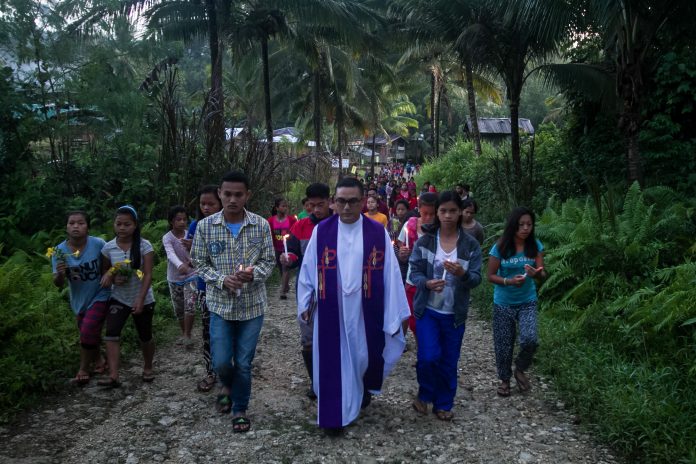A Catholic diocese in the southern Philippines renewed calls for justice for the killing of tribal leaders in the province of Surigao del Sur seven years ago.
“It’s been seven years but the pain and trauma still haunt us,” said Catherine “Katkat” Dalon of the Save Our Schools Network.
She said justice remains elusive for the slain tribal leaders “because of the prevailing culture of impunity in the country.”
“The blood of our leaders was not enough, the government intensified its military occupation of our communities and shut down our schools,” said Dalon.
She said the 2015 killings were “part of a continuing attack” on indigenous peoples “to pave the way for the so-called development projects that destroy our ancestral lands.”
On Sept. 1, 2015, members of a paramilitary group shot and killed Manobo tribal leaders Dionel Campos and Aurelio Sinzo in the town of Lianga, Surigao del Sur province.
Also killed during the incident was tribal school director Emerito Samarca
Campos and Sinzo were killed in front of the villagers, including women and children, who were rounded up in Han-ayan village.
Father Raymond Montero-Ambray, director of the ecology ministry of the Diocese of Tandag, appealed to the government to “deliver justice” and “end militarizing indigenous communities.”
The priest told LiCAS News that it has been the goal of the diocese to “put pressure on the authorities to give more attention to these killings and bring the assailants to the halls of the courts.”
The 2015 killings resulted in the evacuation and displacement of about 4,000 indigenous people who fled their homes and sought shelter in nearby towns for more than a year.
Human rights and indigenous peoples groups claimed that the tribal leaders were killed because of their strong opposition to a proposed coal mining project in their ancestral lands.
During the administration of former president Benigno Aquino III from 2010 to 2016, there were 104 killings of indigenous people, with 88 incidents happening in Mindanao.
In a statement on Wednesday, August 31, youth group Kabataan Para sa Tribung Pilipino said they “mourn” for the victims of the so-called Lianga Massacre.
They said the killings in the communities continued with the death last year of three people — Willy Rodriguez, Lenie Rivas, and Grade 6 pupil Angel Rivas — in the same town.
Human rights groups said the victims were with a group of residents who were harvesting abaca when government troops opened fire at them.
The Philippine Army claimed that the victims were members of the communist-led New People’s Army who were “foraging for food” in the village.
Father Dionito Cabillas, lead convenor of Isaiah Ministry, called on the national government to “strengthen laws and policies that aim to protect the lives and rights of the indigenous people.”
The priest urged the new administration of President Ferdinand Marcos Jr. “to pull out state forces that are occupying and invading indigenous communities and ancestral lands.”
“Armed conflict is not in these communities. Government forces must stop their intrusion and allow the indigenous peoples to live peacefully with respect for their right to self-determination,” he said.
Under the administration of former president Rodrigo Duterte, rights groups recorded at least 102 cases of killing, 69 cases of abduction, 1,173 cases of illegal arrest, and 19,859 cases of threat, harassment, and intimidation of indigenous peoples. – with a report from Jigger Jerusalem









